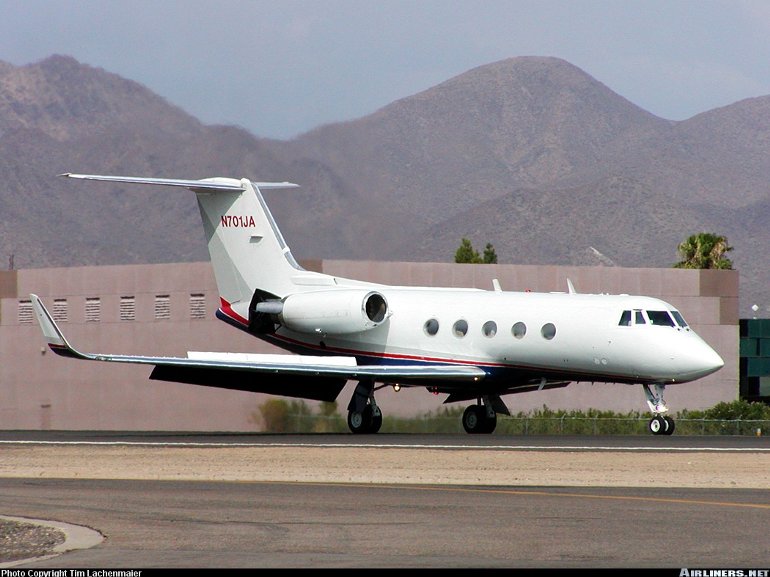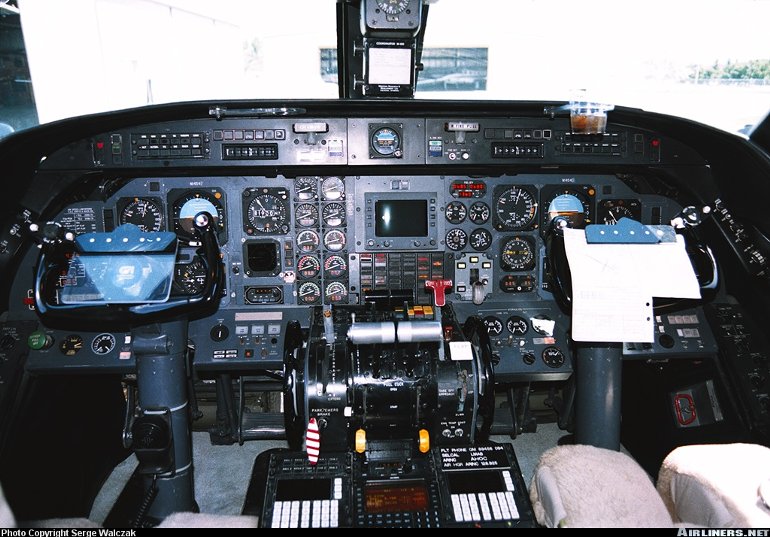Aircraft Technical Data
Grumman G-1159 Gulfstream II/III


| Details | |
| Country of Origin | United States of America |
| Type | Long range large corporate jet |
| History | Collectively the most successful members of the Gulfstream corporate aircraft family, the Gulfstream II and Gulfstream III are Spey powered developments of the original turboprop powered Gulfstream I. The Rolls-Royce Dart turboprop powered Grumman Gulfstream I proved to be quite successful as a large long range corporate transport, while the availability of an faster and more powerful turbojet powered model, the Rolls-Royce Spey meant that a jet powered successor was a logical development. Grumman launched such an aircraft, named the Gulfstream II or G-II, in May 1965. While based on the original Gulfstream I - the G-II shares the same forward fuselage and cross section - there are more differences than similarities. The most obvious difference is the two rear mounted Spey axial flow turbojet engines, others include a new swept wing and tail. A similar size fuselage to the G-I seats 10 in a typical executive configuration. No prototype G-II was built, instead the first to fly was a production standard aircraft, which first flew on October 2 1966. Certification and first production deliveries occurred in October and December 1967 respectively. The improved Gulfstream III followed Gulfstream American's purchase of Grumman's GA lines in 1978. The Gulfstream III first flew on December 2 1979. Changes compared with the G-II include a revised wing of greater span and area with drag reducing winglets, more fuel tankage and thus range, reprofiled nose and a 97cm (3ft 2in) fuselage stretch. Gulfstream IIBs are G-IIs retrofitted with the G-III's wing. Production deliveries of G-IIIs began in late 1980 and continued until 1986 when production ceased in favor of the Gulfstream IV, a somewhat larger model with two new, quieter, more powerful and fuel efficient Rolls-Royce Tay turbofans. |
| Powerplants | G-II & III - Two 50.7kN (11,400lb) Rolls-Royce Spey axial flow turbojets. |
| Performance | G-II - Max cruising speed 935km/h (505kt), economical cruising speed 795km/h (430kt). Initial rate of climb 4350ft/min. Range with max fuel and reserves 6880km (3715nm). G-III - Max cruising speed 928km/h (500kt), economical cruising speed 818km/h (442kt). Initial rate of climb 3800ft/min. Max operating ceiling 45,000ft. Range with eight passengers and reserves 7600km (4100nm). |
| Weights | G-II - Operating empty 16,740kg (36,900lb), max takeoff 29,710kg (65,500lb). G-III - Empty 14,515kg (32,000lb), operating empty 17,235kg (38,000lb), max takeoff 31,615kg (69,700lb). |
| Dimensions | G-II - Wing span 20.98m (68ft 10in), length 24.36m (79ft 11in), height 7.47m (24ft 6in). Wing area 75.2m2 (809.6sq ft). G-III - Wing span 23.72m (77ft 10in), length 25.32m (83ft 1in), height 7.43m (24ft 5in). Wing area 86.8m2 (933sq ft). |
| Capacity | Flightcrew of two. Main cabin seating for up to 19 in G-II or 21 in G-III in a high density configuration, or eight to 12 in a typical corporate configuration. |
| Production | Total Gulfstream II and III production amounted to 464 aircraft, comprising 258 G-IIs and 206 G-IIIs. 244 G-IIs and 198 G-IIIs were in service in 1998. |
| Related Links | Grumman G-1159 Gulfstream II/III |
The backbone of this section is from the The International Directory of Civil Aircraft by Gerard Frawley and used with permission. To get your own copy of the book click here. |
|








